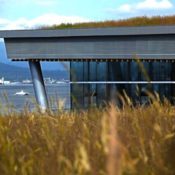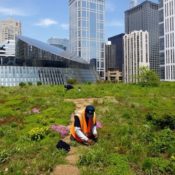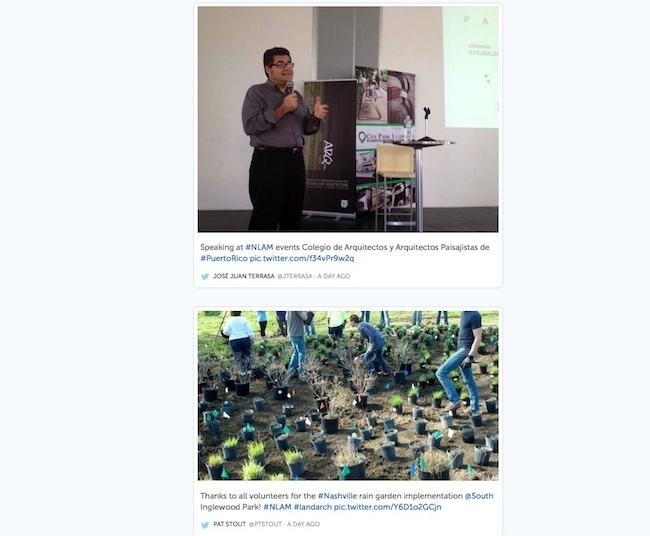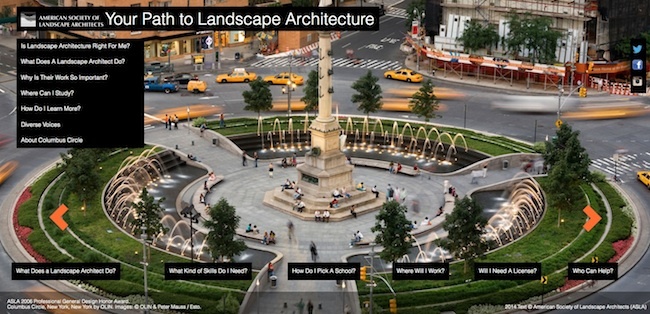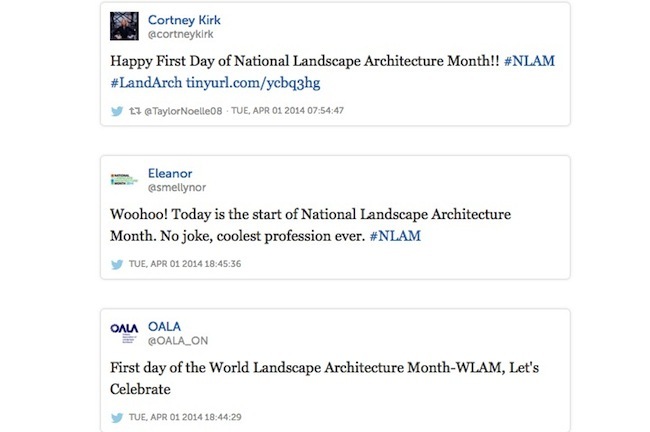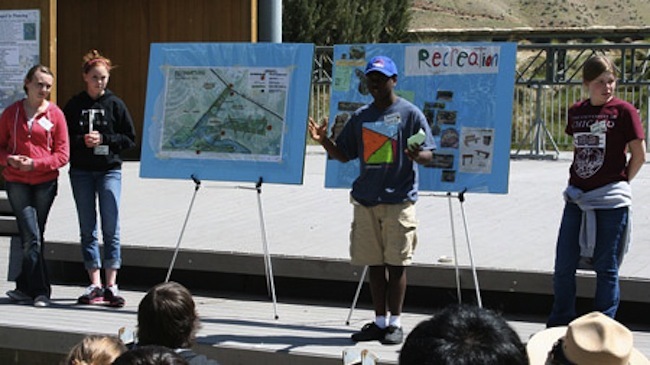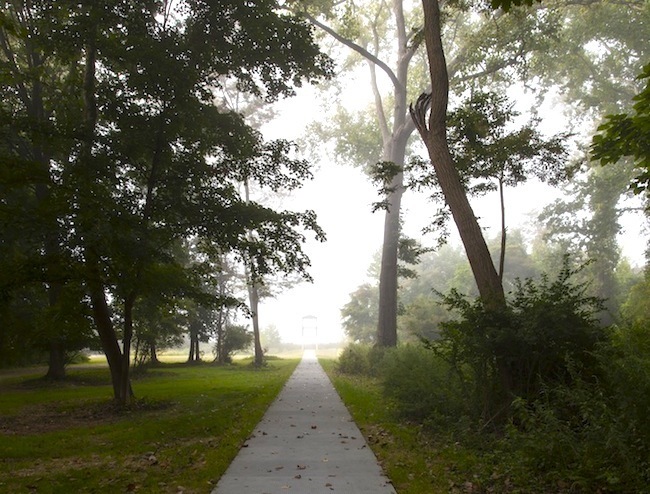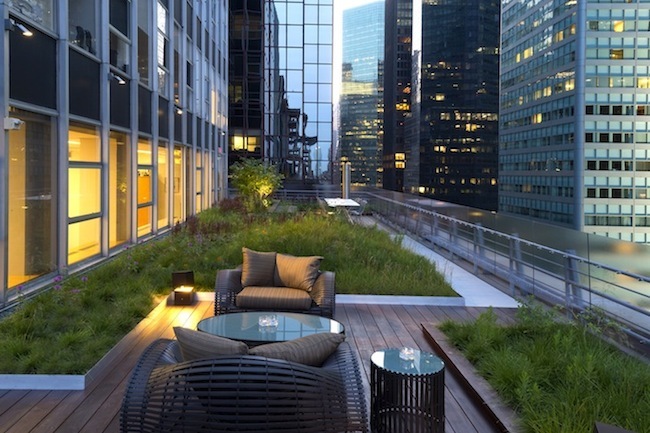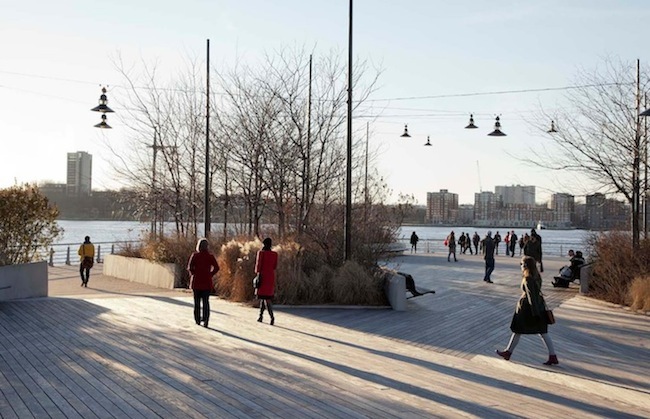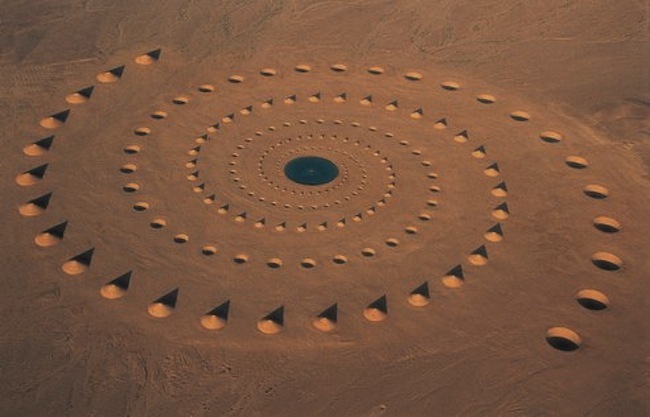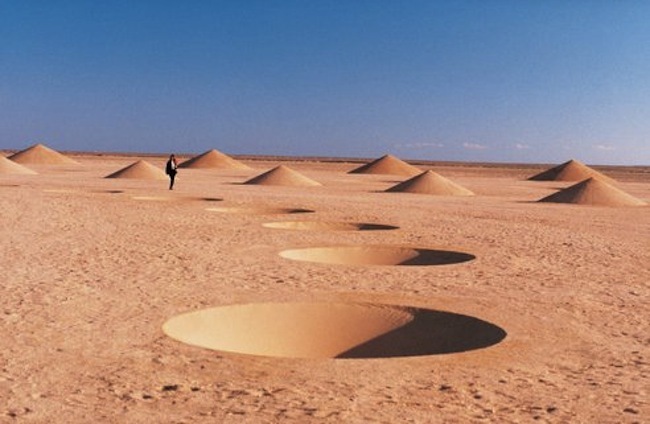Author: Lucy Wang
Filmtastic Fridays – Changing Course: Navigating the Future of the Lower Mississippi River Delta
Southern Louisiana’s Lower Mississippi River Delta is one of the most biologically and commercially significant regions of the United States–and it’s disappearing. Fast. How fast? According to Changing Course, a design competition that aims to reimagine a more sustainable future for the delta, Louisiana loses a football field-sized swath of land every hour, largely because of poor land planning and management. Determined to make a change, Changing Course brought together diverse teams of scientists, landscape architects, and experts to propose design solutions to one of the biggest (and overlooked) problems in the United States. “It’s never been done before,” writes Changing Course. “But we’re working to do it.”
From the description:
“Changing Course is a design competition to reimagine a more sustainable Lower Mississippi River Delta, bringing teams together from around the world to create innovative visions for one of America’s greatest natural resources.”
A shortlist of eight teams was announced earlier this year.
Changing Course: Navigating the Future of the Lower Mississippi River Delta from Van Alen Institute on Vimeo.
RELATED STORY: A Cautionary Tale of Dredge: Dredgefest, Louisiana 2014
Missed last week’s Filmtastic Friday? No worries, you can check out our full archive of featured films here.
Filmtastic Fridays – Vancouver’s 6 Acre Living Roof
So far, we’ve visited Italy’s volcano-shaped green roofs and learned about Washington D.C.’s major push to green its barren rooftops. To round out this week’s green roof coverage, Filmtastic Fridays transports us to Vancouver, where a gorgeous six acre living roof grows overtop its Convention Center. Rich with native species, the lush green roof overlooks the Vancouver Harbor and mountainous surroundings. Landscape architect Bruce Hemstock takes us behind the scenes of the design process, public engagement, and habitat creation.
(Related Story: Top 5 Green Roofs from Switzerland Tour)
From the description:
“The roof of the Vancouver BC Convention Centre is covered with over 2.5 hectares (6 acres) of native grassland. Usually closed to the public, we were able to get a tour and interview with the landscape architect of the project, Bruce Hemstock.
This is part 1 of the “Growing Cities” documentary series shot while traveling in the USA and Canada – June 2009. 2 person crew. Canon 5DmkII and Zoom H4n. Music is “Andvari” by Sigur Rós”
Vancouver’s 6 Acre Living Roof – Growing Cities Series from Dave Budge on Vimeo.
Missed last week’s Filmtastic Friday? No worries, you can check out our full archive of featured films here.
Washington D.C. Leads North America’s 10% Green Roof Industry Growth of 2013
Green roofs are sprouting all across North America, replacing bare rooftops with lush, environmentally friendly gardens. According to Green Roofs for Healthy Cities (GRHC), the green roof trend experienced a 10 percent growth rate in 2013. The green roof and wall industry association’s annual green roof survey showed Washington D.C. leading by a wide margin, in a trend that if continued, could dethrone Chicago’s title as the green roof capital of the United States.
 “We are pleased to see the continued expansion of the green roof market,” said GRHC founder & president Steven W. Peck, GRP in a press release. “The industry’s continued growth is fueled by the multiple public and private benefits green roofs bring, such as stormwater management, reducing the urban heat island, energy savings and green jobs. With supportive public policies like those in Washington DC, we will make progress toward achieving the industry goal of one billion square feet of green roofs installed by 2022.”
“We are pleased to see the continued expansion of the green roof market,” said GRHC founder & president Steven W. Peck, GRP in a press release. “The industry’s continued growth is fueled by the multiple public and private benefits green roofs bring, such as stormwater management, reducing the urban heat island, energy savings and green jobs. With supportive public policies like those in Washington DC, we will make progress toward achieving the industry goal of one billion square feet of green roofs installed by 2022.”
RELATED STORY: Top 5 Green Roofs from Switzerland Tour
Although the prevalence of green roofs might not have caught up with the likes of Europe just yet, the growing popularity of this environmentally friendly trend is encouraging. Washington, D.C., which leads the pack for the second year in a row, installed over two million square feet of green roofs in 2013. Part of that growth is driven by a number of public policies D.C. adopted to support green roof investment, such as rebates of $7 – $15 per square foot per green roof installed and credits for reducing stormwater flow.
Among the top ten North American metro regions investing in green roofs, half are located in the northeastern region of the United States. Canadian cities Toronto, Montreal and Calgary bring up the tail end of the list.
Lead image © Joe Wolf
Filmtastic Fridays: Happy Birthday Frederick Law Olmsted! – Central Park Timelapse
Happy (pre) Birthday Frederick Law Olmsted! Tomorrow (April 26) marks what would have been the father of landscape architecture’s 192nd birthday. Although landscape architecture has come a long way in evolving beyond his pastoral and picturesque styles, Olmsted’s lasting legacy is still influential to our field. Our Filmtastic Friday this week features his best known work, Central Park, captured in a gorgeous fall time-lapse.
From the description:
“One of the most striking things about New York City is the fall colors and there’s no better place to view this then Central Park. I chose 15 locations in the park and revisited them 2 days a week for six months, recording all camera positions and lens information to create consistency in the images. All shots were taken just after sunrise.”
Fall from jamie scott on Vimeo.
Missed last week’s Filmtastic Friday? No worries, you can check out our full archive of featured films here.
Filmtastic Fridays – LAbash Landscape Architecture Student Conference
Earlier this week, those who missed out on this year’s LAbash in UW-Madison got a taste of the action-packed landscape architecture student conference in Stephanie’s recap. But for an even more visual experience, we’re bringing back a little gem of a film that captures the exciting beat of LAbash 2012 in Miami Beach. Commissioned by host school Florida International University, the film goes behind the scenes with student interviews and glimpses into workshops and socials. Keep reading to see the film as well as the video bids for the upcoming LAbash conferences!
Ohio State University’s winning video bid for LAbash 2016 set to the tune of Disney’s Pocahontas’ Colors of the Wind:
And a glimpse into what’s to come for next year’s LAbash conference hosted by Cal Poly SLO:
Missed last week’s Filmtastic Friday? No worries, you can check out our full archive of featured films here.
National Landscape Architecture Month – Week Two Recap
April is flying by and, believe it or not, we are already in our third week of National Landscape Architecture Month! Land8 returns with yet another recap of last week’s activities by landscape architects across the country. Keep reading to see the highlights!
Although Ask A Landscape Architect Day isn’t until this Wednesday, April 16, we saw some professionals getting a head start with their public outreach efforts.
- Texas ASLA set up a booth with lots of goodies for Earth Day Houston on Saturday.
- And some other great work as seen over on our Week 2 Storify recap:
- States and cities across the US are also doing their part to promote National Landscape Architecture Month:
- ASLA continues their daily #NLAM challenge and even launched a new Career Discovery Page! Check it out: asla.org/yourpath
- Don’t forget to cast a Webby award vote for ASLA’s Sustainable Landscapes website!
- Landscape Architecture Magazine was recently featured at Barnes & Noble! In honor of NLAM, Landscape Architecture Magazine is hosting a $100 photo contest–all you have to do take a selfie with an LAM magazine on the endcap of your local B&N and send the photo in to publishing@asla.org to enter. It’s that easy!
- Here at Land8, we’ve also been adding some great #NLAM articles. In case you missed any from last week:
You can also see this week’s round up on Storify.
Lead image via ASLA Texas Twitter
Filmtastic Fridays – Why Become a Landscape Architect?
We wrap up the second week of National Landscape Architecture Month with “Why Become a Landscape Architect?,” a film that showcases the many voices of the field. Created as part of the ASLA Diversity Summit, landscape architects and designers of different backgrounds explain what they love about their careers. Bonus points if you recognize any of the professionals in the film!
From the description:
“Landscape architects and designers explain why landscape architecture might be the perfect profession for you.”
Why Become a Landscape Architect? from ASLA on Vimeo.
Missed last week’s Filmtastic Friday? No worries, you can check out our full archive of featured films here.
National Landscape Architecture Month – Week One Recap
Landscape architects kicked off National (and World) Landscape Architecture Month last week. Here at Land8, we’re recapping some of the events and activities taking place on social media and beyond to boost public awareness.
- The first day of #NLAM kicked off with quite the buzz on Twitter. Check it out on Storify.
- ASLA also rolled out a new annual NLAM tradition: 30 challenges in 30 days to raise awareness of landscape architecture. Follow their social media accounts to see the daily challenge.
- Did you know that April’s Landscape Architecture Magazine is free this month?
- ASLA NY just held their Design Awards Presentation last Thursday. We’ve got the details on winners here.
- The ASLA Indiana Chapter has brought Mayor Ballard on board–April is officially “Landscape Architecture Month” in Indianapolis!
- Nevada ASLA, Cadence, and many others are celebrating NLAM by featuring a spectacular landscape architecture project each day of the month on social media.
- The National Building Museum asks and answers the question “What exactly does a landscape architect do?” They’ll also be hosting a couple talks by landscape architects. Don’t forget to check out their Dan Kiley exhibit when you visit!
- The ASLA Indiana Chapter has also commissioned Studio OTB for an art piece that we can display in Indianapolis. Can you spot the reference to the Indianapolis Cultural Trail?
- Right on cue, the Wall Street Journal highlights three female landscape architects: Edwina von Gal, Mikyoung Kim, and Kate Orff. Read here
The above are just a sampling of what has happened in just the first week. Keep an eye on ASLA’s events page to stay up to date with what ASLA chapters and individuals across the nation are doing to promote landscape architecture. And don’t forget to tweet or share your event to @Land8! We’d love to see what you’re up to.
Lead image via The Understory
Filmtastic Fridays – I Want to be a Landscape Architect
In celebration of National Landscape Architecture Month, we’ve dug up an old favorite for this week’s film. Commissioned by Landscape Institute and produced by Room60, “I Want to be a Landscape Architect” offers a glimpse into the diverse range of landscape architecture and is sprinkled with inspiring phrases like “I want to be visionary” and “landscape architects shape the world we live in.” Although the film doesn’t go into specifics, its artistic execution is great for piquing interest in the profession, especially with the younger generation.
From the description:
If you are thinking about what to study at university or looking for a career change, if you care about the environment and the places where we live, work and play, this film aims to help you decide ‘I want to be a landscape architect!’
To find out more visit: [url removed]
Missed last week’s Filmtastic Friday? No worries, you can check out our full archive of featured films here.
April is National Landscape Architecture Month!
Today marks the first day of National Landscape Architecture Month (NLAM)! For the next thirty days, landscape architects across the U.S. will host public awareness events to bring attention to our profession. To keep pace with the country’s changing demographics, this year’s NLAM theme highlights Career Discovery with a focus on providing early exposure of landscape architecture to students in underrepresented minorities.
According to the ASLA Press Release:
“While landscape architecture is itself a minority profession—it employs just 21,600 people, according to the U.S. Bureau of Labor—it is marked by homogeneity. The U.S. population will be much more racially and ethnically diverse by 2060, according to projections by the U.S. Census Bureau. The total minority population increased by 88 percent between 1980 and 2000, while the non-Hispanic white population grew by only 7.9 percent. Even so, the landscape architecture profession considerably underperforms against these numbers. In a recent ASLA survey of graduating landscape architecture students, nearly 84 percent of respondents were Caucasian, 12 percent were Asian or Pacific Islander, 6 percent answered Hispanic/Latino, 2 percent identified as an American Indian, and a mere 1 percent were African American.”
Last year, landscape architects across the U.S. joined forces to host film screenings, demonstrations, hands-on workshops, in-school presentations, and other public outreach efforts. In addition to similar outreach events in 2014, ASLA has also launched a newly redesigned career discovery resources and activities page to help guide students and teachers.
“We want all students to know that landscape architecture is a welcoming, rewarding career that helps make our towns and cities better places to live,” says ASLA President Mark A. Focht, FASLA. “We want to mentor a future generation of landscape architects who will bring fresh, creative ideas to the table.”
National Landscape Architecture Month also coincides with Earth Day on April 22 as well as Frederick Law Olmsted’s 192nd birthday on April 26. Next year, NLAM will be renamed World Landscape Architecture Month (WLAM) to join concurrent WLAM celebrations by organizations such as The International Federation of Landscape Architects and Canadian Society of Landscape Architects.
Want to join the festivities? Tell ASLA about your event through this survey or contact your local chapter for opportunities. And don’t forget to post, tweet, and share your NLAM events! The Land8 team will be keeping an eye out on NLAM happenings on social media and feature outreach events in a weekly NLAM round up! You can also email your NLAM photographs and events to editor@land8.com.
ASLA NY Announces 2014 Design Award Winners
The American Society of Landscape Architects, New York Chapter recently announced the winners of their Annual Design Awards. Selected from 70 submissions and judged by the Northern California Chapter of the ASLA, these award-winning projects are recognized for their ecological designs that will help boost the city’s resilience to climate change. The five Honor and thirteen Merit ASLA NY awards will be presented at an Award Ceremony and Reception at Manhattan’s Center for Architecture this Thursday, April 3.
Mathews Nielsen Landscape Architects | West Point Foundry Reserve
Waterfront redevelopment and stormwater-related projects dominated this year’s ASLA NY’s Design Awards. Mathews Nielsen Landscape Architects were awarded an Honor Award for their interpretative park at the West Point Foundry Preserve, an example of “sustainable development on a sensitive industrial archeological site.” Michael Van Valkenburgh Associates’ restoration work on the Brooklyn Bridge Park’s Pier 5 was also recognized with a Merit award. The waterfront property includes new recreation areas and sustainable elements, such as a green roof and use of recycled materials. Other standout waterfront reclamation projects include Starr Whitehouse Landscape Architects and Planners’ Harlem River Promenade and Hallet’s Cove, both of which received Merit awards.
HMWhite Site Architects | Midtown Manhattan Sky Garden
In addition to these waterfront projects, the awards feature a diversity of projects that “highlight the vital role that landscape architecture holds in shaping and sustaining our environment,” says Ryan Kovac, ASLA NY Public Relations Chair and Mathews Nielsen landscape architect. Following the Award Ceremony this Thursday, ASLA NY’s award-winning projects in landscape architecture, design, and planning will be on display in Tafel Hall at the Center for Architecture for the month of April.
Following is a list of the Honor Awards:
- Chelsea Cove, Michael Van Valkenburgh Associates, Inc.
- Native Plant Garden, New York Botanical Garden
- SIRR Coastal Protection Plan, Scape Landscape Architecture, PLLC
- Southern Highlands Reserve, W Gary Smith Design
- West Point Foundry Preserve, Mathews Nielsen Landscape Architects, P.C.
Following is the list of the Merit Awards:
- Brooklyn Bridge Park, Pier 5, Michael Van Valkenburgh Associates, Inc.
- The Deconstructed Salt Marsh, Scape Landscape Architecture, PLLC
- Gateway at the State University of New York, College of Environmental Science and Forestry, Andropogon Associates, Ltd.
- Harlem River Promenade, Starr Whitehouse Landscape Architects and Planners, PLLC
- Hallet’s Cove, Starr Whitehouse Landscape Architects and Planners, PLLC
- Hudson Square Streetscape, Mathews Nielsen Landscape Architects, P.C.
- Into the Woods, Nancy Owens Studio LLC
- Midtown Manhattan Sky Garden, HMWhite Site Architects
- Rainlab at Dalton School, Town & Gardens, Ltd.
- Swingtones, Strafford, Supermass Studio Landscape Architecture, P.C.
- Tongva Park & Ken Gensler Square, James Corner Field Operations
- Reconstruct Forest Edge, Keith LeBlanc Landscape Architecture
- Zones of Experience: Symbolism as a Master Planning Tool for St. John’s University, Louis Fusco Landscape Architects
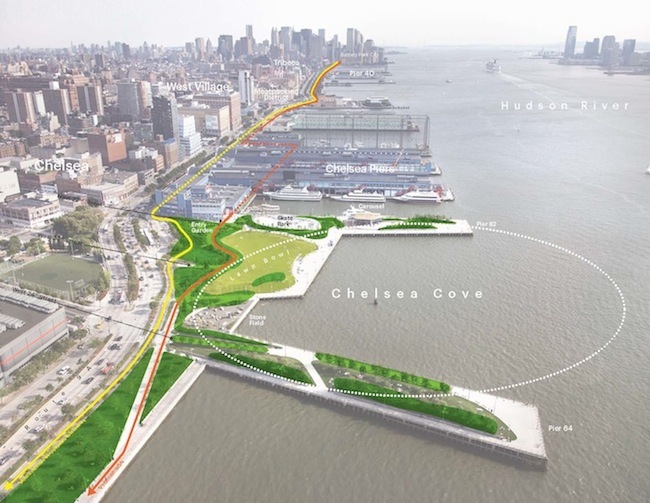 Michael Van Valkenburgh Associates | Chelsea Cove
Michael Van Valkenburgh Associates | Chelsea Cove
Michael Van Valkenburgh Associates | Chelsea Cove
Town & Gardens, Ltd. | Rainlab at Dalton School
Lead image of Starr Whitehouse Landscape Architects and Planners’ Hallet’s Cove
All images via ASLA NY
Filmtastic Fridays – Desert Breath: Land Art Installation
Fans of Robert Smithson’s Spiral Jetty will love “Desert Breath,” a stunning and monumental land art installation located in the arid Sahara desert. Created by artist Danae Stratou, industrial designer Alexandra Stratou, and architect Stella Constantinides, this cosmic, swirling environmental artwork was constructed in 1997 over the span of two years. Centered on what had been a 98-foot artificial pool of water, 178 conical sand mounds and depressions spiral out to cover an area of nearly one million square feet. Seven years later, “Desert Breath” is still visible, but will gradually fade away as the wind and other elements erode the spiraling mounds back to a flat desert plain.
From the description:
“The project is rooted in our common desire to work in the desert. In our mind’s eye the desert was a place where one experiences infinity. We were addressing the desert as a state of mind, a landscape of the mind. The point of departure was the conical form, the natural formation of the sand as a material. It is a site-specific work that grows out of our perception of the site its self. Located between the sea and a body of mountains at the point where the immensity of the sea meets the immensity of the desert. The work functions on two different levels in terms of view point: from above as a visual image; from the ground a physical experience while walking the spiral pathway. Desert Breath still exists becoming through its slow disintegration, an instrument to measure the passage of time.”
“Desert Breath” | Land Art Installation | By D.A.ST. Arteam, Egypt (1997) from Danae Stratou on Vimeo.
Images via Danae Stratou
Missed last week’s Filmtastic Friday? No worries, you can check out our full archive of featured films here.






